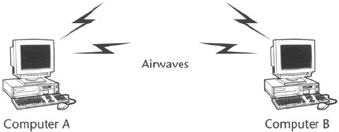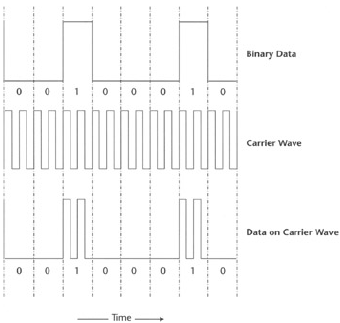A simple wireless LAN (see Figure 1) consists of two or more computers connected via a wireless link to communicate with each other.
A link on a wireless LAN does not consist of a cable or any type of physical connection; instead it consists of a connection via electromagnetic spectra traveling over the air or ether in which data is transmitted.
The computers in a wireless network require network interface cards (network adapters) that establish and maintain the transmission and reception of information between the networked computers.
Also, each computer on a wireless network must conform to the same technological standard (that is, use the same networking technology). All computers in a wireless LAN must have appropriate computer hardware that enables wireless connectivity.
Wireless LAN hardware is an electronic component that is attached to a computer that needs to be connected to a wireless LAN. These electronic components are known as wireless LAN adapters or wireless LAN network interface cards (NICs).
The network adapters can be implemented as Personal Computer Memory Card International Association (PCMCIA) cards in notebook computers, Industry Standard Architecture (ISA) or Peripheral Component Interconnect (PCI) adapters in desktop computers, and are often fully integrated devices within handheld computers.
Each of these network adapters must contain the necessary transceivers (devices that perform both transmission and reception) for the media of choice.
Similar to an FM radio where the sound is superimposed on the radio wave, in wireless LANs the data to be transmitted is superimposed on the electromagnetic carrier at the specified frequency and transmitted over the airwaves by the wireless network adapter (see Figure 2).
The network adapter at the receiving end listens at the same frequency, and when it receives the transmitted waves, it extracts the superimposed data from the electromagnetic carrier and pushes up the technology stack for usage.

